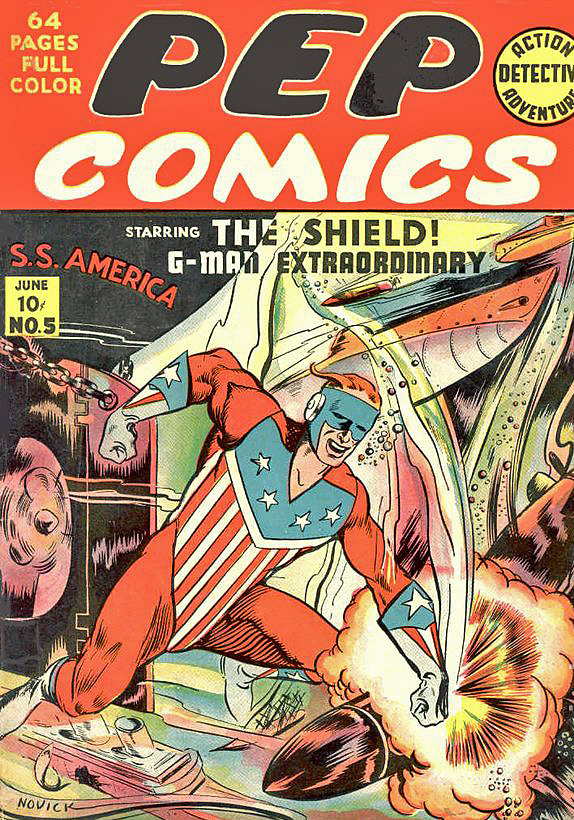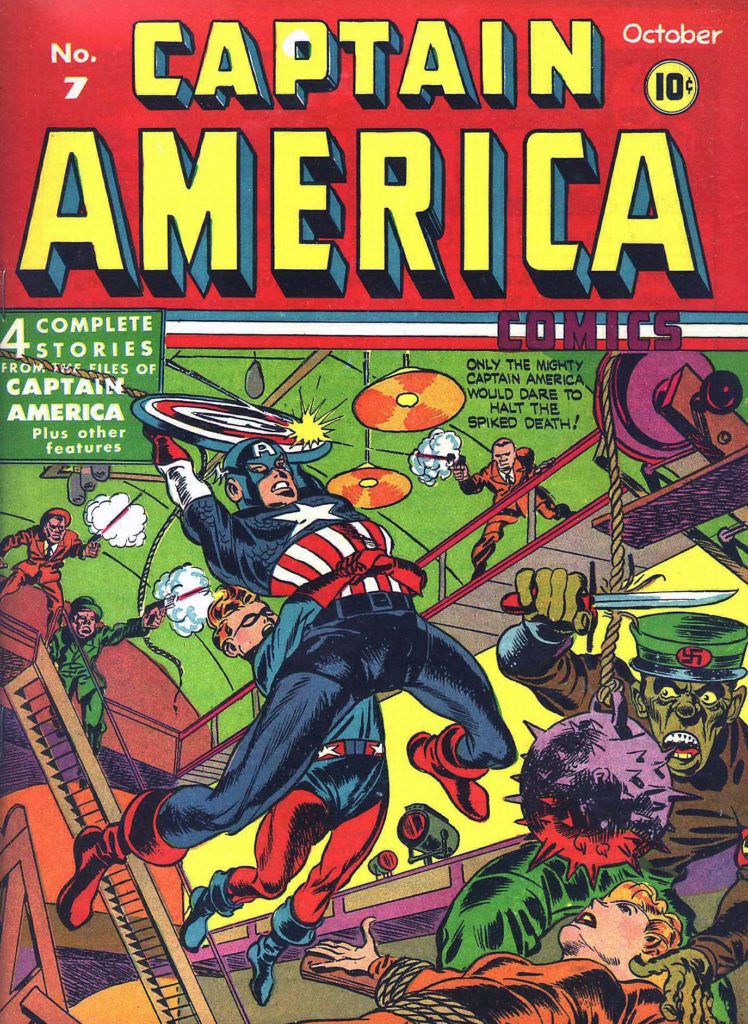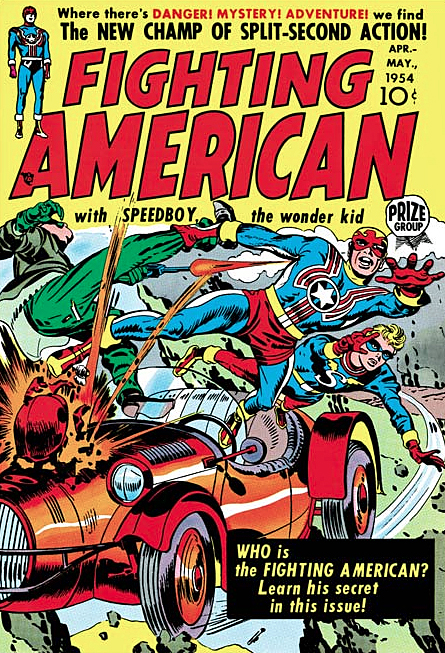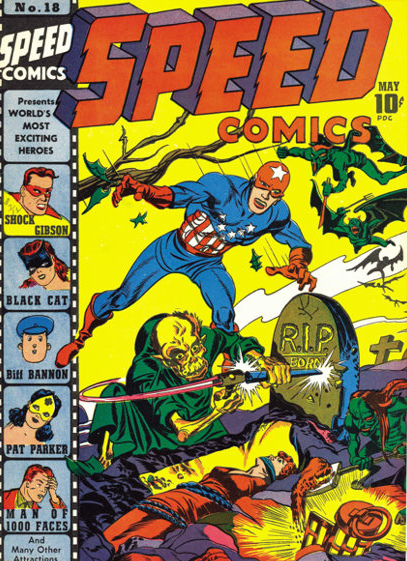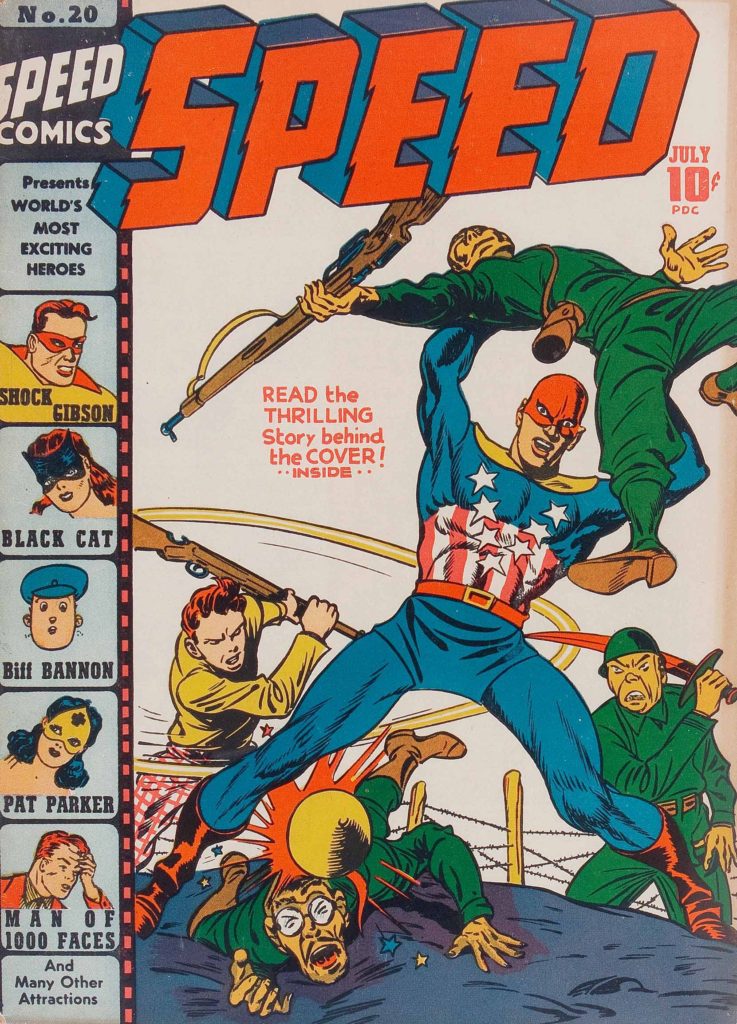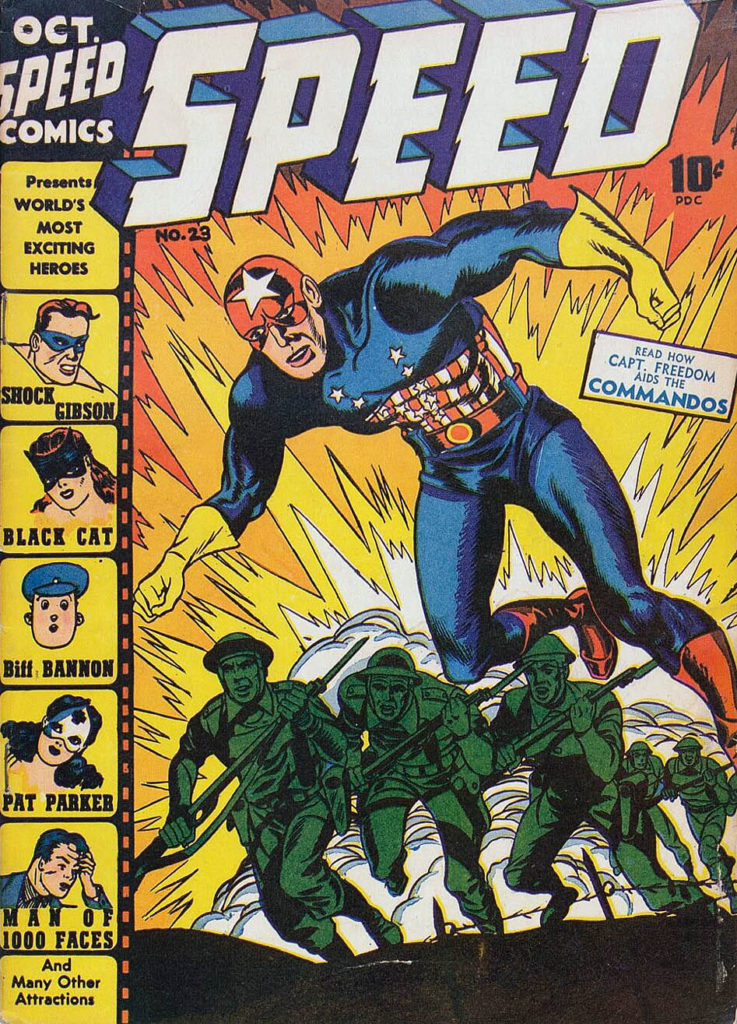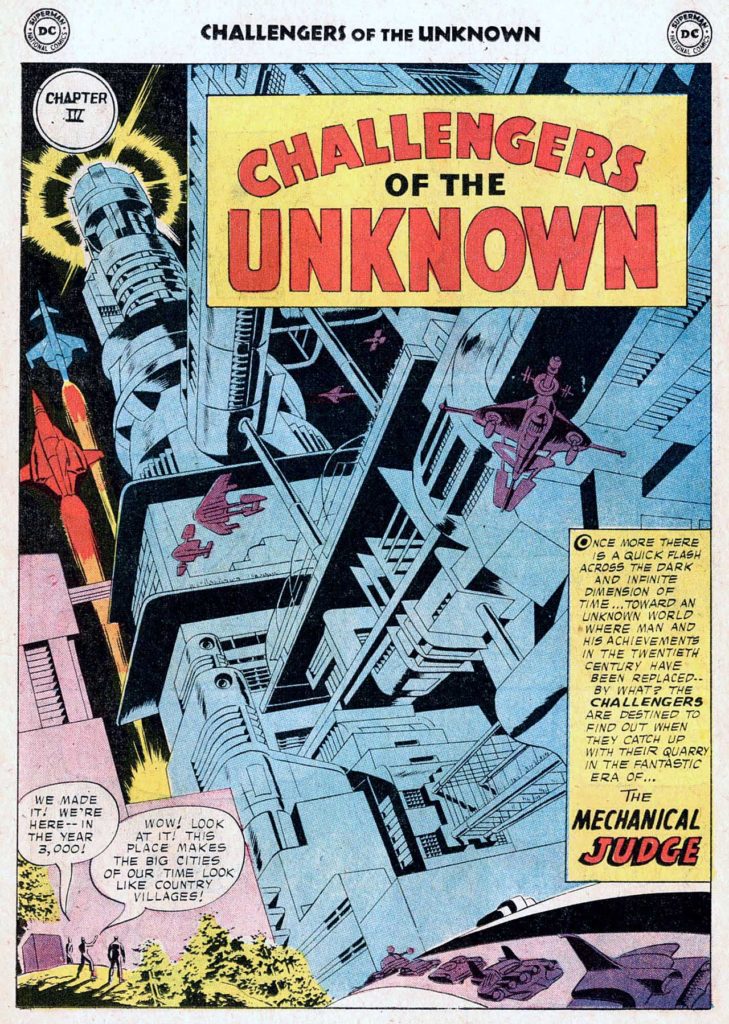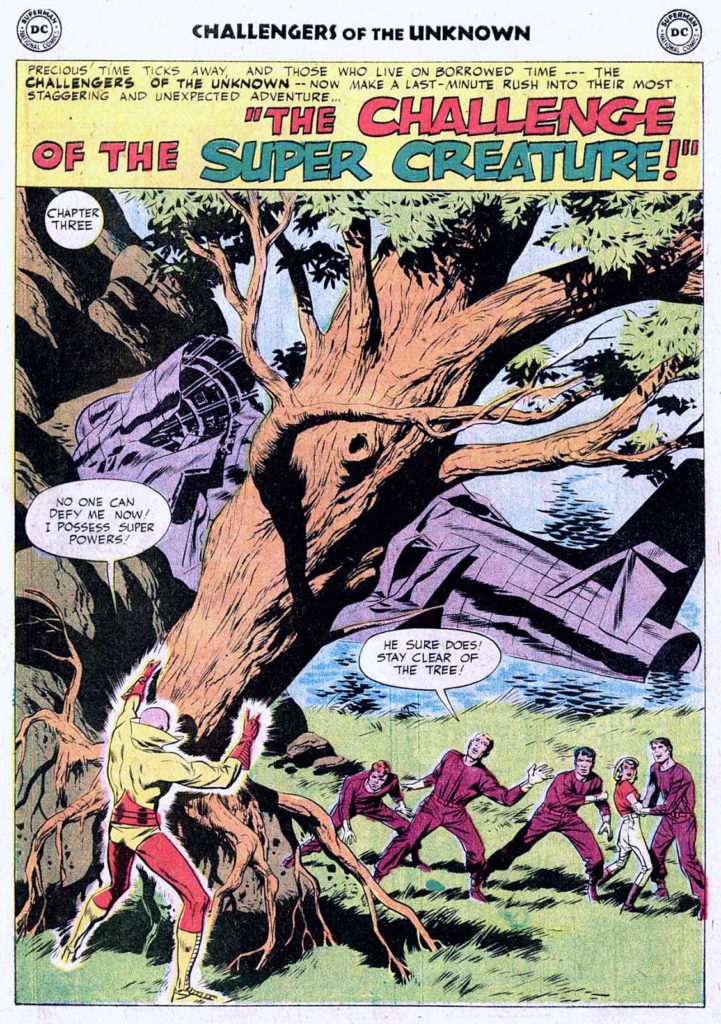The Double Life of Private Strong #1, August 1959
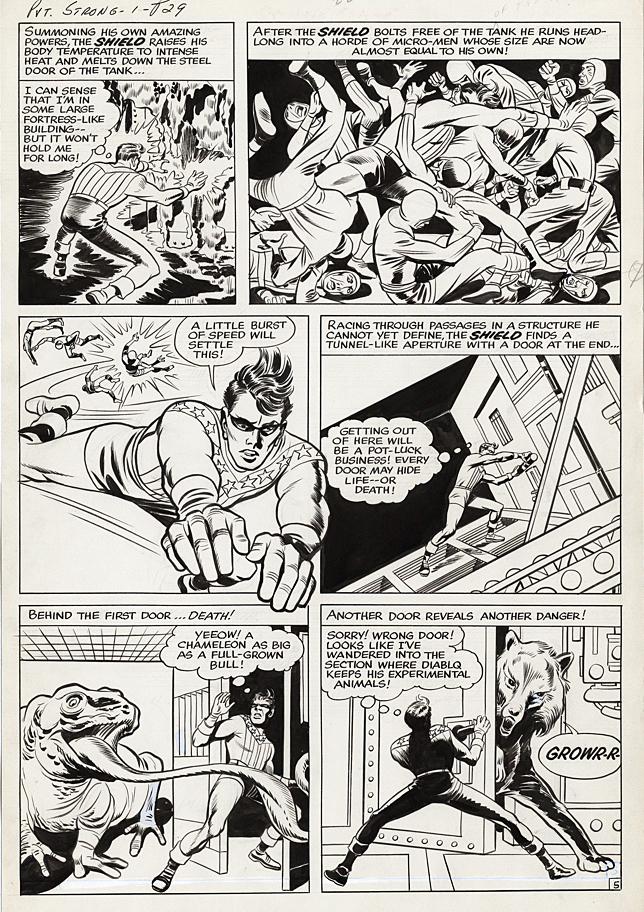
Classic Jack Kirby action highlights this dynamic page from the extremely short-lived Double Life of Private Strong in 1959.
Here though, “Classic” suggests a Kirby Golden Age look and feel. (As an example, The Shield is jumping out of a panel — very similar to earlier Simon and Kirby techniques.) Definitely a time warp, since we were theoretically a few years into the Silver Age at this point.
When did the Golden Age end, exactly? I devoured all the comics’ history books I could get my hands on as a youngster. (Steranko, Feiffer, Daniels, Lupoff / Thompson, et al.) I’m not sure they all agreed on, or even in some cases, identified, the exact point of the “end.”
So my youthful brain filled in the blanks: If the first appearance of Silver-Age Flash (Showcase #4, 1956) launches the Silver Age, then Flash #104, the final issue of the original Flash Comics (1949) obviously ends the Golden Age. (Let’s just call the in-between period the “EC Age.”)
Very neat and tidy, but it only took a short while before I realized it was much more complex than that.
If not Flash, then, how about when All-Star Comics kicks out the Justice Society and switches to All-Star Western (1951)? Perhaps the last issue of the Spirit newspaper supplement (1952)? Or maybe when Captain Marvel and Whiz Comics ceased publication (1953)? And what about the brief return (1954) of Marvel’s “Big Three” (Sub-Mariner, Torch and Captain America). Are those Golden Age Comics?
EBay defines Golden Age Comics as any published through 1955. The well-known back-issue retailer Sparkle City Comics says the era ends in 1956, leading directly into the Silver Age.
See, it gets complicated.
But, if we consider Golden Age as a style of superhero storytelling rather than a timeframe, my vote goes here: The final Simon and Kirby team-up.
Archie Comics, seeing DC’s success at re-introducing superheroes, hired Joe Simon, who in turn hired Jack Kirby (they were no longer partners at this point) to help create some new super suits for themselves.
Two titles came as an immediate result of that ideation: The Fly, and The Double of Life of Private Strong, featuring an updated version of their original patriotic superhero, The Shield. Both characters were Simon and Kirby superheroes. And both looked and felt like Simon and Kirby superheroes. (Even if Simon himself didn’t ink the page.) The page and the story don’t in any way capture the modern feel of DC’s sleeker and slicker Flash, Adam Strange, et al — or especially Kirby’s own Challengers of the Unknown.
The Fly buzzed around for a few years, although Simon and Kirby left after a few issues. Private Strong? A mess from the start, with a terrible title, retro trade dress that appears borrowed from Simon and Kirby’s Golden Age Speed Comics, some obvious knock-offs from Captain America, and a background story that seemed so similar to Superman, DC sent a cease and desist letter to Archie.
After two issues, The Shield was done. Shortly thereafter, the temporary reunion of the Simon and Kirby team was also finished.
A few months later, Kirby and Stan Lee, already churning out monster stories at Marvel, would collaborate for the first time on an ongoing character with Rawhide Kid #17. Although no one knew it at the time, the “Marvel Age” had begun, and the Silver Age was about to rev into high gear.
And the Golden Age of Comic Books was definitively over.
With some pretty great old-school art by Jack to usher it out.
Across town at DC, Kirby’s Silver Age Challengers of The Unknown look like… Jack Kirby in the Silver Age! Giant robots, futuristic cities, et al, are a sign of things to come.



